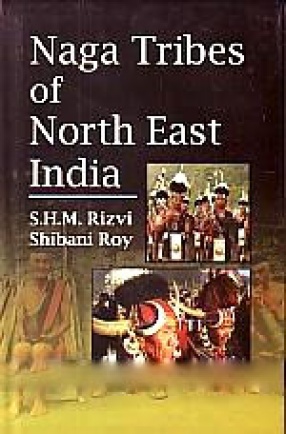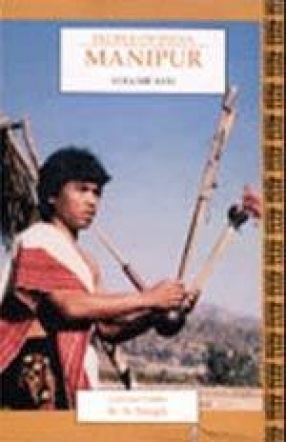
S H M Rizvi

Showing all 19 books













The work aims to answer the question of bio-cultural identity of Muslim from exclusively anthropological perspective. The concept prevailing currently and accepted by the native population dichotomizes Muslims. Those who came and settled in India during the various invasion and historical migrations constituted one group while the other group was believed to be formed by mass conversions of the local Hindu populations of a comparatively lower order in the caste ...


The British Colonial administrators imposed their law, justice and jurisprudence on the native people little realising the importance of the indigenous customary laws. Obsession with written records made them feel that the only nature system available was the `Dharma Sastra' which found an admirer in Warren Hastings. Even this traditional Indian law the Colonial scholars treated as inadequate, incomplete and contradictory. And hence the imposition of ...

Heroin-the dreaded drug is a rather new entrant in the ballucinogenic traditions (madak sanskriti) present in India while nicotine water (Tuibuk) and opium (kani) are already a part of tribal cultural matrix. This microscopic case-study of the South District of Manipur highlights the use of various traditional and on traditional psychotropic substances. The mind boggling findings have been supplemented by qualitative and quantitative data collected during ...

The Ethnic Diversities in India- a by-product of ethnogenesis are a challenge to social analysts in unwinding the most intricate problems of contemporary India. The book Ethnic Diversities in India is a first step towards understanding this issue in an objective manner with the help of standardized anthropological techniques adopted in analyzing the data with a holistic perspective. It has been written in patois for a layman devoiod of scientific or technical ...


The Garo people live in the North East part of India and concentrated in the state of Meghalaya. They reside on the hills that derive its name from, Garo and hence referred to as Garo Hills. The Garo address themselves as a chik or Mande. The people live in a lush forested area that experiences heavy rainfall. The population of this area is believed to be approximately 300,000. The Garo people categorise themselves into a number of groups based on dialectical ...

Arunachal Pradesh - the abode of Adi group of tribes is the land of rising sun or the land of the dawn lit mountains and a part of eastern Himalayan ranges situated on the northern-east tip of India and borders Bhutan, China, Mayanmar and the State of Assam. The ever green wooded forests with streams, rivers meandering through mountains offer the cooling tranquility and scenic beauties where every morning the sunrise spreads its golden carpet first. The Adi are ...

"When you go home, tell them of us, that for their tomorrow, we gave our today," reads and epitaph in the Second World War Cemetery of Kohima-the Capital of Nagaland. This state is the home of the brave and daring, yet simple and innocent, Naga tribes. Lapped in the eastern frontiers of the Himalayan mountain range Nagaland is marked by an unhurried pace of life, calm and serene environs and fresh, unpolluted air, which make a welcome change for a jaded ...

Manipur is a land of many tribes (more than 30) who have different languages, cultures and traditions. For political purposes, some are included along with the Naga generic term in the north and Kuki-Chins in the South. The Kuki tribes inhabit in all districts of Manipur The Linguistic Survey of India, Vol. III, Part III, carried out by G.A. Grierson, and published in 1904 by Govt. of India, provides a general idea of the geographical spread of Kukis' living ...

Often some academicians with a grim view of India's future mention to the numerous secessionist battles raging in different parts of the multiethnic, multi-religious nation. Of course, politicians and nationalists take instant umbrage. But ask them to explain the mountain call for disunion and chances are that an accusing finger will point at some “foreign powerâ€. We have always refused to acknowledge the disenchantment of our people. Almost all our ...

The term Mizo, meaning highlander, refers to a conglomeration of tribal communities sharing certain cultural specificities. Initially each community was eager to maintain its distinctive identity in respect of dialect, religious beliefs and social customs. But subsequently a process of integration and assimilation came into play, and there has now developed among them a common identity the Mizo. An inherent spirit of self-help was nurtured. Widespread acceptance ...

The Anthropological Survey of India launched the People of India project on 2d October 1985 to generate an anthropological profile of all communities of India, the impact on them of change and the development process, and the links that bring them together. As part of this all India project, the ethnographic survey of all the 115 communities in Assam was taken up for the first time in collaboration with local scholars. The results of this survey were discussed at ...

The contemporary Indian Muslims represent a culturally and ethnically diversified group of breeding isolates bound together only by common belief in Islam. Boundaries are maintained between various Muslim groups which result into presence of about 436 bio-cultural entities, each differing from the other with their individual specificities. The ethnographic profiles of these breeding isolates have been depicted in the book. The book attempts to demolish the ...

The term 'tribe', though widely used, has no precise definition and the lack of general consensus in this respect has resulted in its application to suit certain interest. In India, as a whole the tribal population is about 8.1 per cent of the total population. In this book Scheduled Tribes an attempt is made to present the ethnography and change in some of the major tribes in order to record the state of tribal affairs on the eve of 50 years of Independence.

INDIA-before the advent of Muslims and coming of British Colonials-had an outlook on sexuality different from what Islam preached and Christianity practised. The book first of its kind in Indian anthropology aims to clear the cloud of mystique enveloping the minds of the Indian youth on the subject of sexuality. It is intended for those who desire to understand themselves. The basic biological differences between male and female have been elaborated ...

India is a home of almost all major religions of the world and Indian system of name giving is considered to be highly specialized. Besides bestowing a personal name to an individual, a surname is suffixed or prefixed in order to assign membership of a cohesive group. This surname may be a totemic name representing a lineage, a clan, a phratry, a descent but reflective of individual’s soci0-religious standing within the group. In the book encyclopaedia of ...


The Anthropological Survey of India launched the People of India project on 2nd October 1985 to generate an anthropological profile of all communities of India, the impact on them of change and the development process, and the links that bring them together. As part of this all-India project the first ever ethnographic survey of Manipur was taken up in collaboration with local scholars. The scholars studied, for the first time, 29 communities of Manipur. The ...
